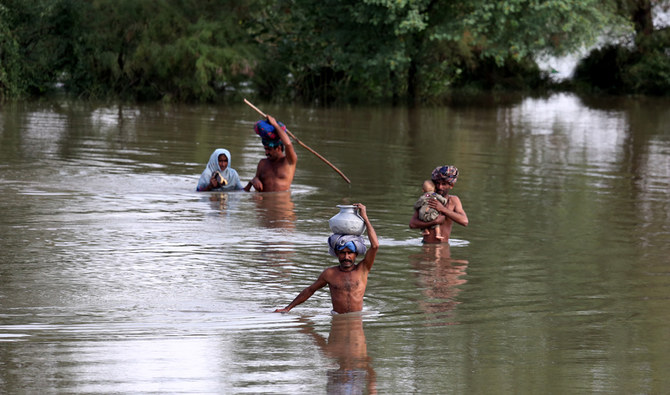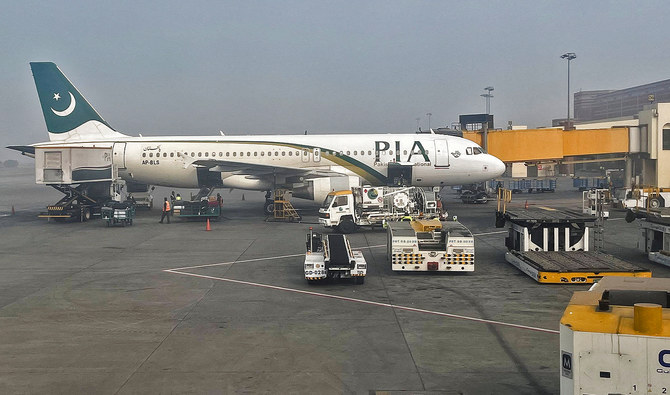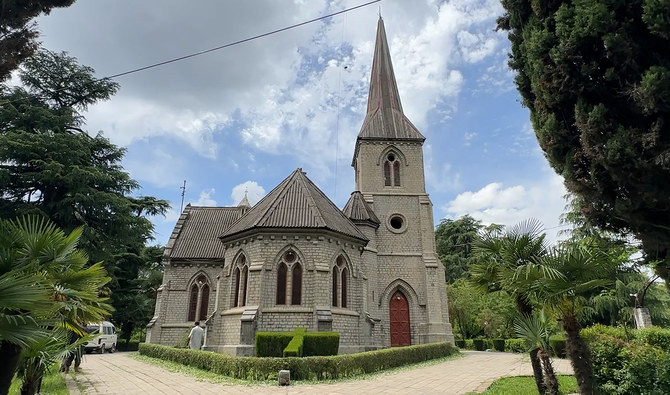KARACHI: Monsoon rains and floods have killed 402 individuals while uprooting over 1.67 million people in the province of Sindh since the season began in mid-June.
Speaking to Arab News, Qasim Soomro, the provincial parliamentary secretary for health, said it was beyond the control of any federating unit to deal with the unprecedented floods and their aftermath.
“Chief minister Sindh Syed Murad Ali and his team members have constantly been in the field to provide relief to flood-affected people,” he said. “But the devastation is so great that we cannot control the situation without the help of social welfare organizations, individual donors, and the international community.”
Here are some of the photos taken by Arab News during its flood coverage in Sukkur, Shikarpur, Larkana and Khairpur districts of the province that show how the ongoing rains and floods have affected the lives of millions.

A woman seeks government help as her female relatives mourn her son who died after the roof of her house collapsed due to heavy rains in Chandio Goth of Larkana district in Pakistan on August 26, 2022. (AN Photo/S.A. Babar)

Sakina Khatoon is looking for her belongings among the rubble after her house collapsed due to flood in Abdullah Narejo Goth in Khairpur, Pakistan, on August 26, 2022. Khatoon told Arab News she had bought several items for her daughter’s marriage which had been destroyed by the flood. (AN Photo/S.A. Babar)

A child eats boiled rice at a shelter in Mula Bux Shar village in Larkana, Pakistan, on August 26, 2022. Monsoon rains and floods have damaged paddy fields in several parts of the country. Agricultural experts believe it will also be difficult for farmers to grow wheat in the coming months due to the erratic weather conditions. (AN Photo/S.A. Babar)

Residents of Khairpur district in Pakistan travel to Karachi on August 26, 2022. Thousands of people have arrived in the country’s largest city to take refuge after floods destroyed their hometowns. (AN Photo/S.A.Babar)

A man sleeps while his donkey and buffaloes are fastened to a roadside grill along the Indus Highway near Khairpur, Pakistan, on August 26, 2022. (AN Photo/S.A.Babar)

A young boy in Larkana, Pakistan, said he developed skin rashes during the monsoon season on August 26, 2022. According to Qasim Soomro, parliamentary secretary for health in Sindh, a health crisis was likely to follow the monsoon season. (AN Photo/S.A.Babar)

Shehzad Shah Jilani, a social activist, distributes food items in Abdullah Narejo Goth in Khairpur, Pakistan, on August 26, 2022. Different social welfare organizations, such as Al-Khidmat, Edhi and Akhuwat, are busy with relief work in different parts of the country. (AN Photo/S.A.Babar)

Dr. Naveed Mahar, chairman of Chak Town in Shikarpur, Pakistan, rescued people from flood in the area on August 27, 2022. Mahar told Arab News thousands of people were displaced after their houses were inundated. (AN Photo/S.ABabar)

A woman is asking for help in front of her ruined home in Mula Bux Shar village in Larkana, Pakistan, on August 26, 2022. (AN Photo/S.A.Babar)

Indus River at its full capacity on August 27, 2022. Aziz Soomro, a Sindh administration official, told Arab News the river could cause more flood in the province since it was already creating a deluge in the northern part of the country. (AN Photo/Arab News)

A woman is using a handheld fan near the Sukkur-Shikarpur Highway on August 27, 2022. Monsoon rains and floods have displaced 1.67 million people in Sindh according to the provincial disaster management authority. (AN Photo/S.A. Babar)

A passenger bus moves through water flowing over the Indus Highway near Nasirabad in Sindh, Pakistan, on August 26, 2022. According to official statistics, rains have damaged 2,328 kilometers of roads and 60 bridges in Sindh. (AN Photo/S.A.Babar)

Two girls are trying to reach a safer location after their house was surrounded by flood water in Khairpur, Pakistan, on August 26, 2022. (AN Photo/S.A.Babar)
















